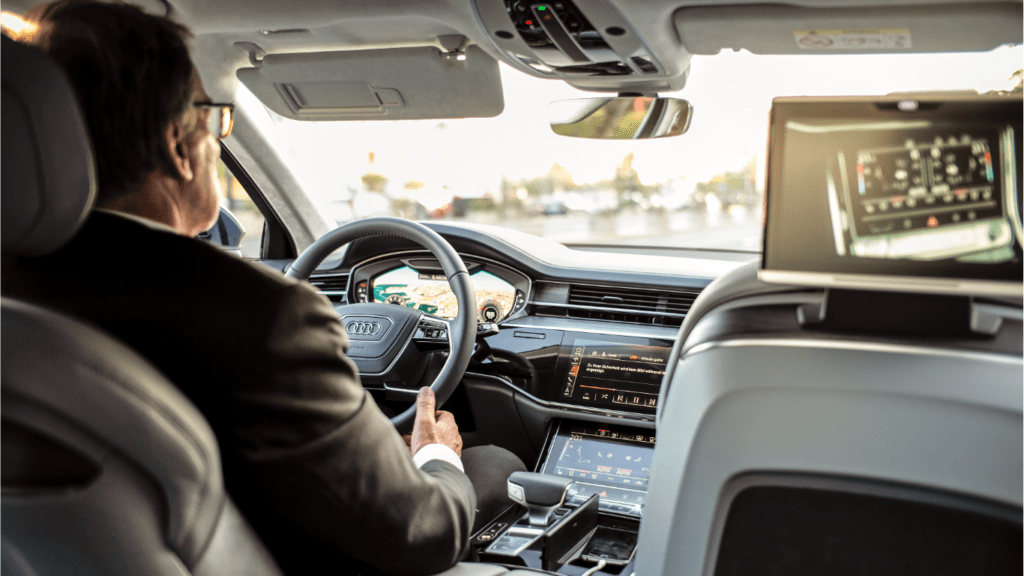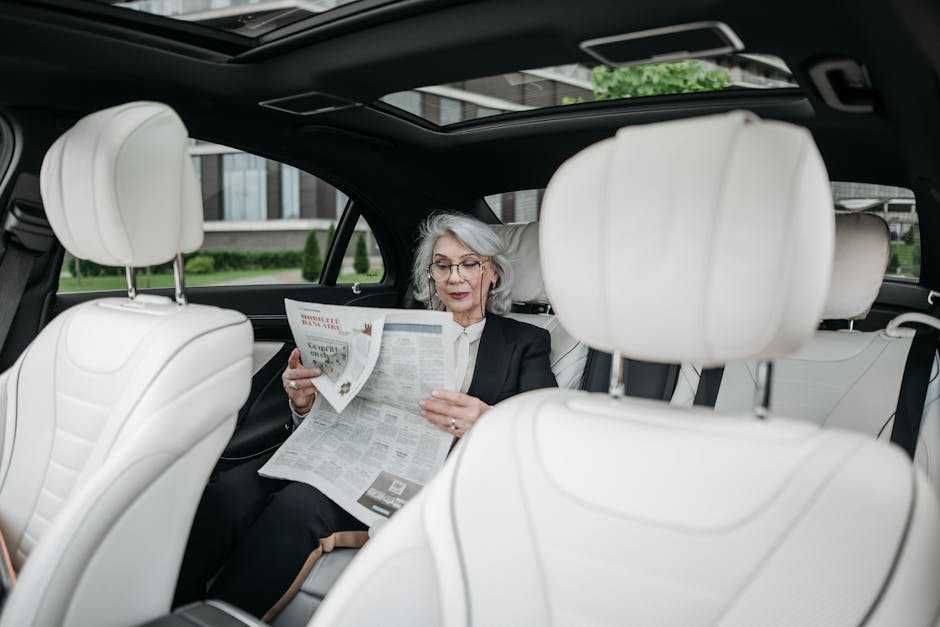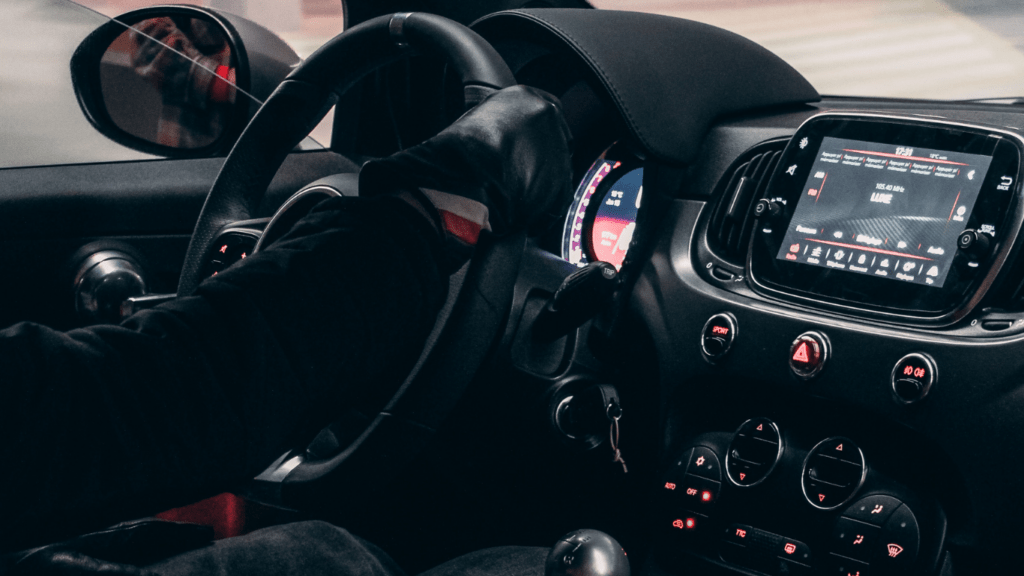Understanding Heads-Up Displays
A Heads-Up Display (HUD) projects critical driving information onto the windshield. This display ensures that drivers don’t need to glance at traditional dashboards. HUDs provide data like:
- speed
- navigation
- alerts
The concept of HUDs originated in military aviation. Pilots benefited from quick access to crucial data directly in their line of sight. This technology has transitioned to automotive use, enhancing driver awareness.
HUDs use a combination of sensors, projectors, and transparent display elements. They present data in a way that’s visible against various lighting conditions. This clarity ensures that drivers can see essential information regardless of the time of day.
HUDs reduce distractions by keeping vital information within the driver’s field of vision. This feature is crucial for maintaining focus on the road. Reduced distraction leads to quicker reaction times, which is essential for accident prevention.
Modern HUDs incorporate advanced features like augmented reality. They highlight lane markers, detect pedestrian movements, and offer turn-by-turn navigation. These elements contribute to an immersive driving experience, ensuring drivers have all the information they need at a glance.
Integrating HUDs in cars aligns with the increasing trend towards smart and connected vehicles. As our roads evolve, so does the technology that supports safe driving practices. Invested in driving safety, HUDs represent a significant step forward in automotive innovation.
Enhancing Driver Awareness
Heads-up displays (HUDs) enhance driver awareness by providing vital information directly within the driver’s line of sight. This technology ensures that crucial data is always accessible without diverting attention from the road.
Real-Time Information Access
HUDs project real-time information like speed, navigation directions, and traffic alerts onto the windshield. This immediate access to data keeps drivers informed of changing road conditions, GPS directions, and their vehicle’s performance metrics. By displaying navigation instructions on the windshield, HUDs help drivers make timely decisions regarding turns and exits.
Reduced Driver Distraction
- Distractions cause accidents, and HUDs aim to minimize these interruptions.
- Traditional methods require glancing down at dashboards or infotainment screens, taking eyes off the road.
- HUDs remove this need by integrating critical information within the driver’s field of vision, thus maintaining focus on driving.
- Advanced features such as lane departure warnings and collision alerts further reduce the risk by alerting drivers to potential dangers ahead.
Improving Safety Features
Heads-up displays (HUDs) significantly boost safety through various integrated features.
Collision Warnings
HUDs provide real-time collision warnings. They use sensors to detect potential obstacles, such as vehicles and pedestrians. The system projects alerts directly onto the windshield. For instance, if a car brakes suddenly ahead, a warning symbol appears, prompting the driver to react immediately. This real-time alerting reduces the likelihood of rear-end collisions and other common accidents.
Lane Departure Alerts
HUDs also feature lane departure alerts. These systems use cameras to monitor lane markings and detect unintentional drift. If the vehicle begins to veer out of its lane without signaling, the HUD projects a visual warning. This alert appears as a highlighted lane marker or an icon, drawing the driver’s attention to the potential lane departure. Such alerts enhance road safety by keeping the driver focused on the correct lane, thus preventing accidents due to drowsiness or distractions.
Integration With Advanced Technologies

Heads-up displays (HUDs) are transforming driving safety by integrating with advanced technologies, enhancing their utility and effectiveness.
Augmented Reality
Augmented reality (AR) in HUDs presents a significant leap in driving safety technology. By overlaying digital information onto real-world views, AR enhances driver awareness and decision-making. For instance, AR-based HUDs highlight lane markers and road signs, making navigation more intuitive and reducing the chances of missing critical information.
They also detect and highlight pedestrians and cyclists, improving reaction times in busy urban environments. AR-powered HUDs offer seamless transitions between daytime and nighttime driving, maintaining visibility of crucial information under various lighting conditions.
Connectivity With Smart Vehicles
The connectivity of HUDs with smart vehicle systems maximizes their potential. By interfacing with in-car sensors and vehicle-to-everything (V2X) communication systems, these displays provide real-time updates on traffic, road conditions, and vehicle performance. For example, HUDs communicate with adaptive cruise control systems to project safe following distances on the windshield.
They also sync with navigation systems, updating routes based on live traffic data and reducing travel time. This connectivity enhances situational awareness and contributes to a smoother, safer driving experience by consolidating essential data into the driver’s line of sight.
HUDs integrated with advanced technologies like AR and smart vehicle connectivity signify a paradigm shift in driving safety, offering drivers comprehensive, real-time data to make informed decisions on the road.
Real-World Applications
Heads-up displays are increasingly integrated into various aspects of modern driving, enhancing safety and convenience.
Current Automotive Industry Usage
Many car manufacturers have adopted HUDs in their latest models. Audi, BMW, and Mercedes-Benz, for example, incorporate HUDs to project navigation directions and speed limits onto the windshield. These displays assist drivers in making informed decisions without looking away from the road.
Additionally, HUDs in vehicles like the Cadillac Escalade provide collision warnings and lane departure alerts, minimizing accident risks by keeping the driver informed of immediate dangers. By integrating with existing vehicle systems, HUDs deliver a seamless, real-time update on traffic and road conditions.
Future Trends and Innovations
The future of HUDs includes further advancements in augmented reality (AR). Companies like Tesla and Waymo are exploring HUDs that highlight pedestrian crossings and road signs more vividly. Future models may also include gesture-based controls, allowing drivers to interact with HUDs without physical touch.
Enhanced connectivity with smart infrastructure could provide real-time updates about road hazards and dynamic navigation adjustments. Autonomous driving, in conjunction with AR HUDs, promises an even safer driving experience, blending intuitive displays with automated vehicle control for optimal road safety.




